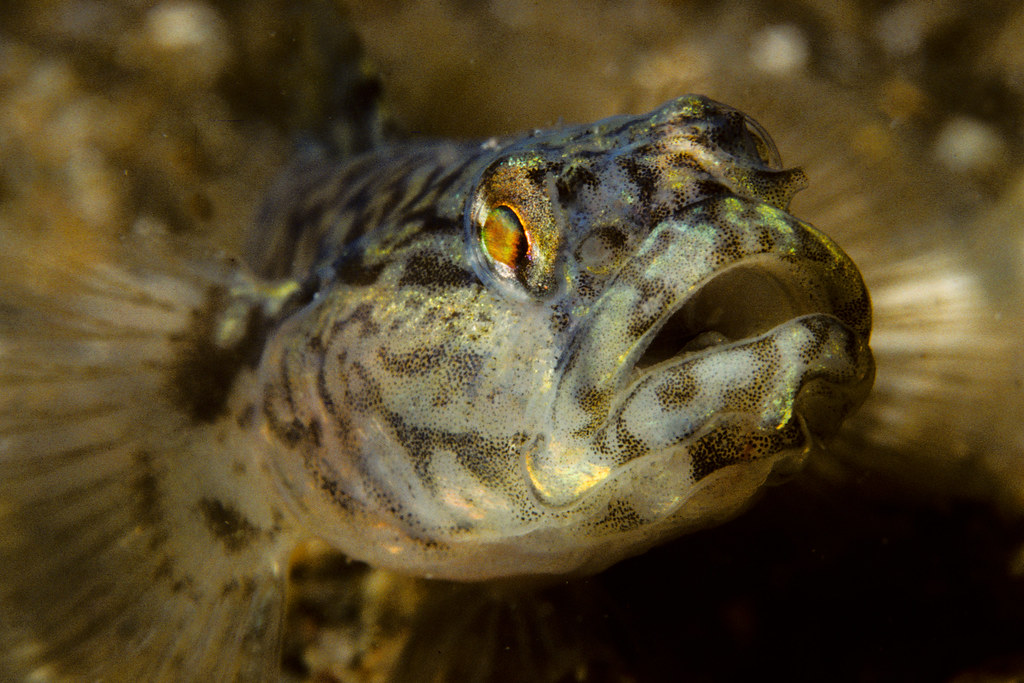Gobies
Family: Gobiidae
Gobies are small, secretive fish that live in the Chesapeake Bay year-round, mostly among oyster reefs.
This section shows one large critter image at a time. Use the thumbnails that follow to select a specific image to display here.

This gallery contains a grid of small thumbnails. Selecting a thumbnail will change the main image in the preceding section.
Appearance
Three species of gobies can be found in the Chesapeake Bay: the naked goby, Gobiosoma bosc, the seaboard goby, Gobiosoma ginsburgi, and the green goby, Microgobius thalassinus. The goby's elongated body grows to 2 inches in length. It has a large mouth with large, closely set eyes on the top of its head. It has two separate dorsal fins and fused pelvic fins that act as suction discs.
Naked gobies are scaleless and a dark greenish-brown color with 8 to 10 light bars running along their sides.
Seaboard gobies are brownish with whitish crossbars, and dark, irregular spots form a line along either side of their body. They have only two scales on each side of the base of their tails.
Green gobies are the most colorful of the three species: males are greenish-blue with a reddish dorsal fin, orange-yellow pelvic fins, and a white-edged anal fin with dark spots on the border, and females have a gold head, gold-blue bands underneath the eyes, bluish-green sides, and a large black spot on the back of the dorsal fin. Green gobies have scales on the back part of their body.
Feeding
Gobies mainly eat worms and small crustaceans.
Predators
Larger fish such as striped bass, bluefish and weakfish prey on gobies, who hide from predators within the small crevices of oyster reefs.
Reproduction and life cycle
Spawning occurs in May to November. Females lay bundles of small, amber-colored eggs inside of empty oyster shells. Males aggressively guard the eggs until they hatch. Free-swimming naked goby larvae may migrate upstream and school over oyster reefs before settling.
Seaboard gobies live in deeper waters than naked and green gobies. Green gobies are often found over muddy bottoms and within redbeard sponge colonies. In winter, gobies move to the Bay’s deeper channels. Naked gobies may bury themselves in bottom sediments in winter. Naked gobies may live for four years.
Did you know?
- Naked gobies are the most abundant and wide-ranging of the three Chesapeake Bay goby species.
- Although they are abundant, gobies are quite secretive and not easily found.
Sources and additional information
- Fishes of Chesapeake Bay by Edward O. Murdy, Ray S. Birdsong and John A. Musick
- Life in the Chesapeake Bay by Alice Jane Lippson and Robert L. Lippson
- Naked Goby – Texas State University
- Naked Goby – University of Rhode Island
